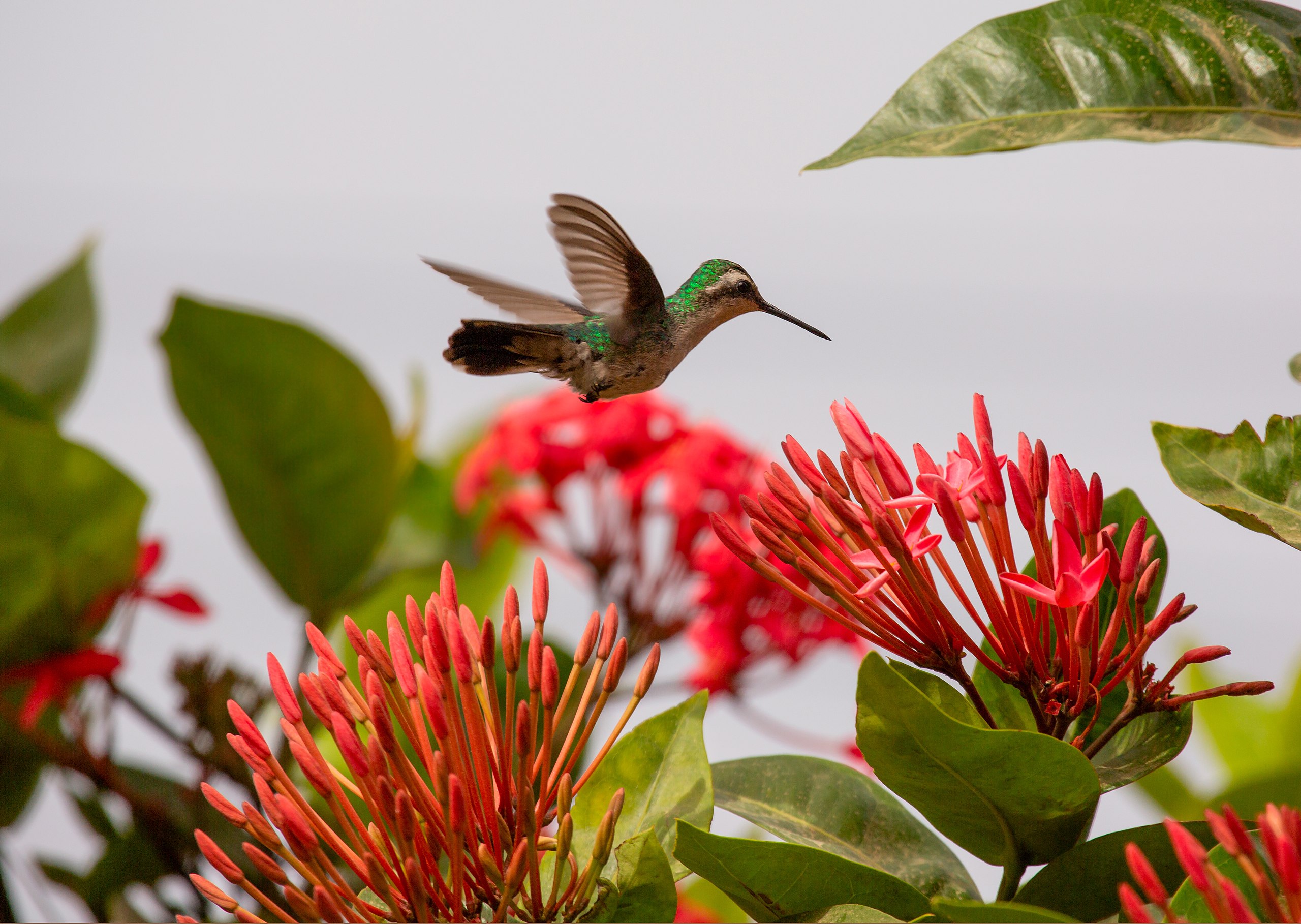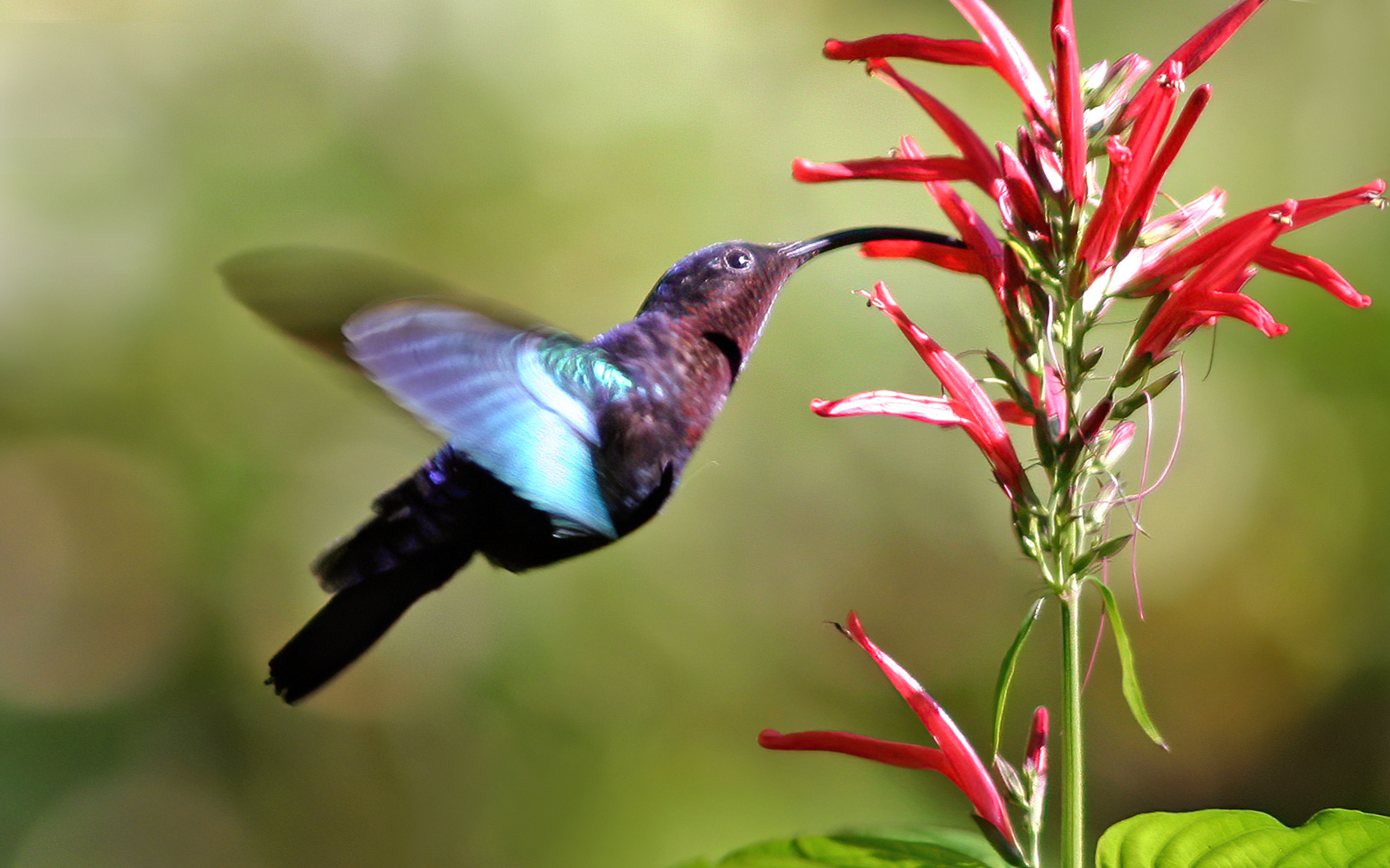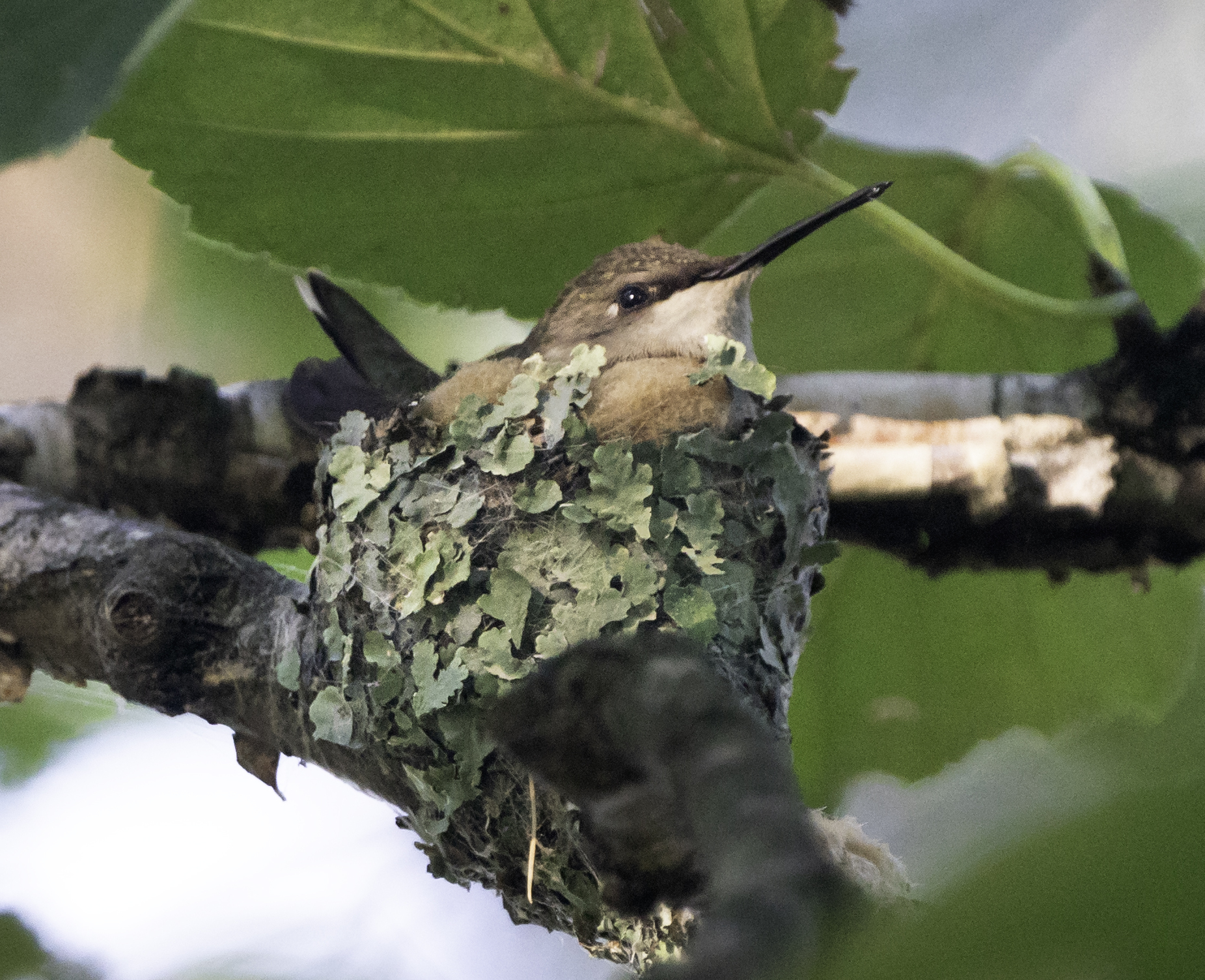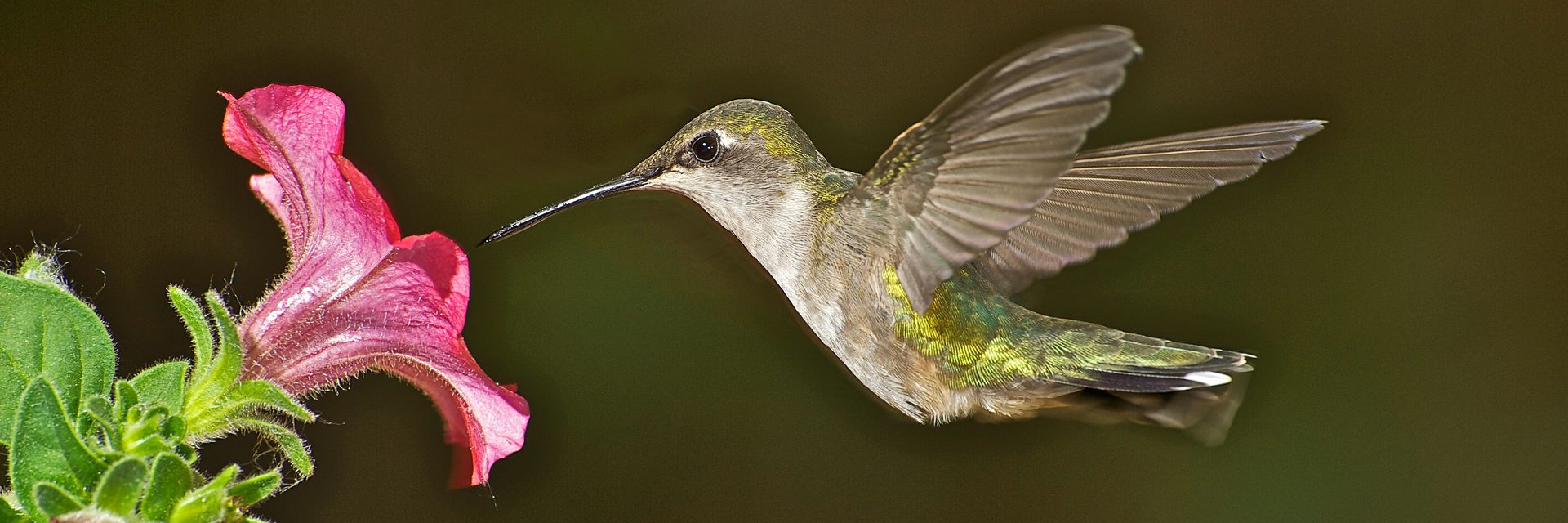Nature could hardly have devised a more efficient flying creature than the hummingbird. Sized quite compactly in a range from 20 grams down to a miniscule 2g, hummingbirds are capable of astonishing and sometimes mysterious feats. They can flap their wings up to 80 times per second, and their petite hearts can beat, at maximum, over 1,200 times per minute. That’s 20 beats every second! And, boy, do hummingbirds love their secrets, particularly around their origins and migration.
◊
Science depends in large part on observation. But what if the object of interest literally moves faster than the blink of an eye? This is the case with hummingbirds, nature’s “extreme sports” fanatics. They can dive from hundreds feet up in the air at astounding speed, then instantly stop to hover near flowering plants, wings beating furiously, faster than the human eye can register. This little bird – one of the tiniest warm-blooded animals in existence – can also fly backwards and upside down, and sometimes both at once.
Only recently, over the past decade or so, have extremely high-speed cameras become light and maneuverable enough to follow hummingbirds as they dart through their habitats, mate, and seek flowers that hold the nectar on which they dine, as seen in the David Attenborough-hosted documentary Hummingbirds.
The new technologies have expanded greatly what we know about these “hummers,” but some mysteries still haunt hummingbird researchers: How do they migrate, and how do they feed on these lengthy journeys?
If you have ever seen a hummingbird up close, chances are quite high that you live somewhere in the Western Hemisphere. That’s because for at least the past 20 million years, hummingbirds have solely inhabited the areas we now call North and South America. The habitat for all 337 known species of hummingbirds ranges from the southernmost points of Alaska, down through the eastern and western stretches of southern Canada and the U.S., into Mexico and Central America, all the way through South America to its southernmost point at Tierra del Fuego, in Argentina.
Did Hummingbirds Once Inhabit Europe?
Given what is known about the habitation range of hummingbirds for the past 20 million years or more, some intriguing questions arise: Does their time in the Western Hemisphere encompass the entire history of hummers? Or is there a deeper, hidden mystery somewhere in the archeological record?
A team of scientists working in Germany believes it has found evidence of the tiny birds having lived in Europe in the distant past. These researchers have uncovered fossils of small birds in southeastern Germany that date to between 30 and 35 million years ago. Through analysis of the wing bones, the scientists have come to believe that the fossils are related to the hummingbirds those of us in the West see in our gardens and parks.

Canivet's emerald hummingbird (Source: Betty Wills, Atsme on Wikipedia)
To see the most diverse array of hummingbirds, visit the northern Andes mountain range in South America, where approximately 290 species are extant in every ecosystem, from lowland rain forests to mountaintop cloud forests.
The team’s findings are still theoretical, and more research, particularly DNA analysis, is needed to establish a firm connection. But some very interesting questions naturally arise. For instance, if these archaeological remains are actually related to today’s hummingbirds, why is there at least an eight-million year gap in the archaeological record? That’s quite a long time for the hummingbirds’ ancestors to disappear.
And what does this discovery tell us about the habitats and history of these creatures? Similar potential hummingbird fossils have also been discovered in Poland and France, indicating a fairly expansive range at that time. So, why did they disappear from the Eastern Hemisphere? Was there a climatic reason for the disappearance of the species over millions of years? Were they forced out of their home areas by predators? Or, perhaps most intriguingly, were they superseded by competitors for food, leading the potential hummingbird ancestors to migrate from one land mass to another over eons?
Such questions cannot be definitively addressed without further research. Although we know from DNA histories that hummingbirds have been in the West for more than 20 million years, the fossil record on this side of the Atlantic goes back only about 10,000 years. Until there are more discoveries, we have no way to connect the dots.
How Do Hummingbirds Migrate?
Crossing an ocean is an extraordinary feat for any species, but even more so for hummingbirds. These marvels of aerodynamic efficiency have extraordinarily high metabolisms, which imposes an internal obstacle to long-distance travel. Their blood circulatory system works so quickly that it takes less than one second for blood to make a complete trip from their hearts, through their bodies, and back. They must eat every 15 minutes to maintain their strength. And at night, they go into a state called torpor, similar to hibernation, which allows them to survive until morning.
There are 80,000 different kinds of flowering plants that rely on hummingbirds for pollination. Some hummingbirds visit more than 2,000 flowers a day to consume enough nectar to live.
If it’s such a challenge for hummers simply to make it through the night, how can they migrate long distances to find habitats in which they can thrive? Somehow they do. Every fall, some hummingbird species travel between the temperate zones of North America to the tropics of Central and South America where they prefer to spend their winters. For many of the birds, this requires a minimum 600-mile flight over the Gulf of Mexico. They can’t fly at more than 30 miles per hour, which means that they would need at least 20 hours to make the crossing. Do they make the trip in a continuous state of torpor?
 Purple-throated carib hummingbird feeding (Source: Sharp Photography, via Wikipedia Creative Commons)
Purple-throated carib hummingbird feeding (Source: Sharp Photography, via Wikipedia Creative Commons)
Luckily, we’re not alone in our curiosity. Researchers and bird watchers are currently studying this mystery-shrouded question with some exciting new technology. More than 50 young ruby-throated hummingbirds (which dominate the Eastern U.S.) were fitted with minuscule radio telemetry devices weighing only .2 grams. To hummers, some of which double their weight as they “bulk up” to migration size, it’s an easily manageable burden.
The radio devices set off a signal when close to tracking stations along the south coast of the U.S., where these birds are known to congregate during migration. Stations were also set up at other points along the coast and in the Gulf, culminating in spots along the northern tip of the Yucatan Peninsula, a site where many hummingbirds are known to converge during winter. Surely, the researchers thought, this test would confirm the birds’ long flight over the Gulf.
Amazingly, the flight trackers hinted at a much different story. Rather than taking one day to fly from southern Alabama to the Yucatan, the fierce little birds each took about a month to make the trip. And instead of flying due south over open water, the birds were tracked only close to the shoreline, making a definitive solution to the question still tantalizingly out of reach.
And it begs the larger and more remote mystery of the European fossil record. Solving the hummingbirds’ annual migratory habits would help resolve the other unsolved questions regarding their hypothesized journey from the Old World to the New.
What the findings do reveal, however, is the importance of preserving natural habitats around coastal areas not just for resident species but for migrating ones as well. The lead researcher of the study, Theodore Zenzal Jr., commented, “The conservation of . . . almost all migratory birds rests crucially on their ability to rest and refuel in coastal habitats.”
“Feathering the Nest”: Female Hummingbirds and Nesting Behavior
Those of us who are entranced by the movements of these mighty but miniscule flyers have other questions about their habits and habitats. If we see hummingbirds at all, it’s when they are searching for food, hovering in front of flowers and speeding from one to another in fractions of a second. When not active, the hummers – possibly due to their size – make special efforts to stay out of sight. They hide in bushes and thickets, generally out of sight as they hop along twigs and small branches.
Hummingbirds have the largest brain in proportion to body size of any bird; they are second only to dolphins among all animals.
The birds carefully hide their nests as well, for females lay only two little eggs at a time, and they are extremely vulnerable to predators. And a nest is exclusively the female’s domain, as the male hummingbird takes no part in nesting or protecting their young.

Ruby-throated hummingbird on nest (Source: Lorie Shaull, via Wikimedia)
Unlike those of many other bird species, the nests of hummingbirds are merely temporary structures, being used for just the five to eight weeks that mother hummers needs them. The female is the chief of nest construction, starting and finishing the work even before she mates. She spends several hours a day for five to seven days collecting materials like twigs, spider silk, and even human detritus as building materials. She shapes the nest into a small cup, with the upper edges curved slightly inward to protect her babies from accidentally falling out. The spider silk serves to bind the nest together, but is also elastic enough to “give” as her hatchlings grow and need more space.
Sexy Maneuvers: Hummingbird Mating Rituals
The mating ritual that mature hummingbirds undertake is a marvel to behold, made especially clear now that we have the high-speed cameras to capture them at speeds of 500 frames per second or more. What a spectacle! Their attempts at balletic grace may not always come to fruition, but the hummingbirds’ mating dance is more erotic than a tango and funnier than the macarena.
The most dynamic single move that transpires during the male’s mating “dance” is the thrilling “death-dive” that he makes from as high as 1,200 feet, zooming down at high speed to come beak-to-beak or side-by-side with his intended mate. Then he performs a wiggly maneuver with his lower torso that seems designed to show off his athleticism and balance. He can actually twist his tail vertically by up to 90 degrees!
If the female responds affirmatively to her suitor’s ministrations, they will seal the deal by rousting about in midair, using all their skills of flying, hovering, and buzzing around noisily as they partner in their unique romantic prelude.
Hummingbirds are amazingly agile aerialists with extreme needs, and they have the highest oxygen demands of all vertebrates. Their flying heartbeat pulses more than 1,200 times per minute, and the wings of some species flap up to 80 times per second!
Hummers don’t actually mate in midair (as intriguing a prospect as that may be). Instead, after the male’s display, a female who accepts the male’s entreaty will perch on a branch and wait, in the words of How Things Work, “for the male to mount her from behind. About four seconds later, they leave each other and never look back.”
Bad romance? Or just another day in the animal kingdom? Whichever, the male will take no part in caring for hatchlings, and the female will get back to her work of tending to and protecting the nest, and eventually to feeding her young.
Flying Solo: Hummingbirds Take Wing
Try not to be crestfallen if you were hoping for more of a rom-com type of ending here. More than 20 million years of hummingbird evolution has led to this state of affairs, so no judgment here. Both male and female hummingbirds do awesome things for their size, hovering for seconds on end and extracting nectar from flowers with wispy tongues that have become highly specialized to seek, find, and extract nourishment from their hosts of the floral kingdom.
The most astonishing thing they almost all do is migrate from temperate to tropical zones each year, sometimes traveling thousands of miles. How even freshly born hummingbirds make this risky journey, without an experienced guide, remains a mystery. It’s just one of many remaining secrets of hummingbirds, and research ornithologists and other scientists of the future have much to observe and share with coming generations of hummingbird aficionados.
If you live in the U.S., take a look at the MagellanTV documentary Hummingbirds, narrated by David Attenborough, to see some breathtaking high-speed cinematography of hummingbird behavior. Or, wherever you live, check out hundreds of globally available nature titles on MagellanTV. Enjoy!
Ω
Kevin Martin is Senior Writer for MagellanTV. He writes on a wide variety of topics, including outer space, the fine arts, and modern history. He has had a long career as a journalist and communications specialist with both nonprofit and for-profit organizations. He resides in Glendale, California.
Title image: Green and white humming bird flying. (Credit: Alan Braeley, via Unsplash)

